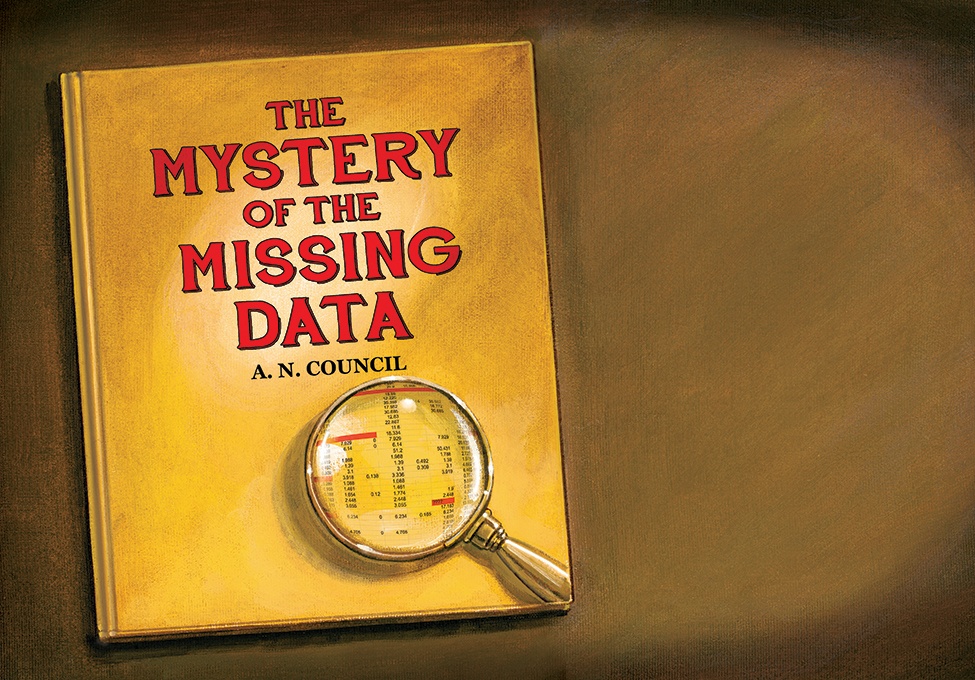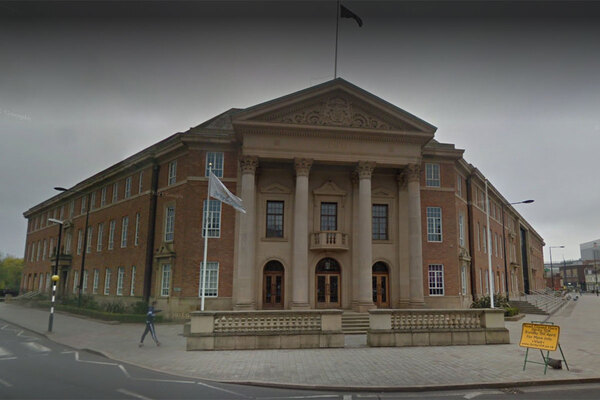You are viewing 1 of your 1 free articles
Lies, damned lies, and homelessness stats
There are puzzling inconsistencies in the way English councils record cases of homelessness prevention and homelessness relief. Patricia Arthurs investigates
Video:
features style

Like any good mystery story, the homelessness records local authorities keep are full of red herrings and seem designed to convey confusion and suspense.
Councils across England report to the government the number of cases of homelessness they prevent and the number they relieve. But even a brief glance shows these figures are riddled with holes. It’s less a case of whodunnit and more a case of whodunnwhat.
Video:
Ad slot
Murky picture
Statistics outlining whether councils are taking action to stop someone becoming homeless (prevention) or stepping in to offer assistance afterwards (relief) are opaque and seem to reveal a disparity in the way different councils deal with the issue.
It’s not merely an academic problem. In 2015, the UK Statistics Authority said homelessness prevention and relief and rough sleeping statistics were unclear and potentially misleading. It urged the government to take action, adding that the figures don’t currently meet the standard to be classed as national statistics.
The authority maintains that the way homelessness statistics are compiled and applied in England disguises the real extent of the need, and has called on the Department for Communities and Local Government (DCLG) to improve the trustworthiness, quality and value of its figures.
“As a council we always try to prevent homelessness in the first instance wherever possible.”
Spokesperson, Woking Council
If the national picture is muddied, it’s at a local level where confusion first takes hold. Take Stroud Council, for example. Government statistics for 2014/15 show that Stroud relieved homelessness in a high proportion of cases compared with most other councils, with 301 relief cases and 182 prevention cases.
However, the government’s records are at odds with the council’s own. Stroud’s internal data suggests it prevented homelessness in all 483 cases, with no relief recorded.
In this case, the council acknowledges its own figures were incorrectly compiled, with a spokesperson admitting that it hadn’t counted relief cases until the last quarter of 2015/16, before adding “but [we] will do from now on”. The spokesperson also admits that the council filled in the wrong section of the government’s website, which explains why the DCLG’s figures are different.
Yet administrational mix-ups do not fully explain why there are such marked differences between prevention and relief across the country.
Woking is another council that, according to government figures, has dealt with a very high proportion of cases through relief: 107 compared with 62 prevention cases in 2014/15. But the council argues that its relief figures are proportionally higher than elsewhere because of the way people in danger of becoming homeless report their situation to the council, rather than because of how the data is gathered.
“As a council we always try to prevent homelessness in the first instance wherever possible,” explains a spokesperson. “But we regularly find that households leave it too late before they approach the council regarding their homelessness. We would prefer it if households approached us before becoming homeless.”
However, with some town halls recording virtually no relief cases, it seems unlikely that Woking’s homeless population behaves so differently to the rest of England’s.
Some councils have made real attempts to get to grips with the figures themselves. Redditch Council is another with a high number of relief cases: 189 out of 264 overall.

Elise Hopkins, a trustee of local homelessness charity Redditch Night Stop, says the problem is that other local authorities are not as rigorous when it comes to recording their work. “Not all councils record or interpret the definitions of these [relief and prevention cases] consistently,” she says.
In Redditch if an at-risk family is supported to find alternative private rented accommodation within 28 days, this will be recorded as the council having relieved homelessness.
“Most other local authorities record this as prevented, as this helps them to look better in the national league tables,” suggests Ms Hopkins.
“Not all councils record or interpret the definitions of these [relief and prevention cases] consistently.”
Elise Hopkins, trustee, Redditch Night Stop
On the flip side, Sunderland Council prevents homelessness in a particularly high proportion of cases compared with other councils. Its figures suggest it prevented homelessness 2,958 times in 2014/15 and relieved it just five times.
A spokesperson for the council puts this down to having “really good systems in place and excellent relationships with partners and landlords”. Additionally, Discretionary Housing Payments (DHPs) awarded to residents are included in the council’s prevention figures, although Sunderland is by no means the only local authority to do this.
Bristol Council has a similarly high proportion of prevention cases to Sunderland: 4,289 in 2014/15 and just nine cases of relief. “Two-thirds of prevention cases are achieved internally, with our voluntary sector preventing the other third,” a spokesperson for the council explains. “We also make best use of DHPs and ensure all cases where homelessness is prevented are recorded appropriately.” It says its success is dependent on DHPs being available to councils moving forward.
What is far from clear, however, is whether the differences in approach are captured in the national figures. And charities warn that the figures do not represent the full scale of the problem anyway – with figures not capturing people helped by more informal methods by councils or family before they are classed as homeless.
Matthew Downie, director of policy at homelessness charity Crisis, suggests that “when official statistics are published, particularly the homelessness applications and acceptance figures, what local authorities don’t like is government somehow representing that as the scale of the problem. This is because it misrepresents the amount of demand they are facing at a local level”.
There are quite obvious inconsistencies in the way data for the prevention and relief of homelessness is collected and interpreted by different councils.
“Two-thirds of prevention cases are achieved internally, with our voluntary sector preventing the other third.”
Spokesperson, Bristol Council
Solving the mystery
These discrepancies can be explained by everything from individual errors to different interpretations and circumstances. For example, an inner London authority might approach preventing homelessness in a different way from a rural council with a much smaller number of cases.
But the problem is far from unsolvable: there are alternative approaches that might prove more useful.
Wales documents homelessness statistics very differently to England, with its records focusing on outcomes.
Authorities record whether or not the outcomes are “successful” – where the intervention is likely to result in homelessness being prevented or relieved for at least six months – as part of a commitment to collect “more detailed annual data”.
The change is part of new legislation aimed at preventing homelessness included in the Housing (Wales) Act 2014. The Welsh Government now has a statutory duty to prevent homelessness for all eligible households at local authority level.
In 2015/16 a total of 7,128 households were assessed as threatened with homelessness within 56 days in Wales. Of these, 4,599 cases (65%) saw homelessness prevented for at least six months.
A total of 6,891 Welsh households were assessed as being homeless and owed a duty to help secure accommodation during 2015/16. Of these, 3,108 households (45%) were successfully relieved of their homelessness and helped to find housing that was likely to last for six months, following intervention by the local authority.
These figures give a much clearer picture of what is going on in Wales, and homelessness as a whole in the country has reduced since the act passed.
According to Shelter Cymru, intentional homelessness decisions are down 65% since 2014. At the end of December 2015 there were 1,830 households in temporary accommodation – a 14.9% reduction from the previous year.
“There are bits and bobs that the Welsh can learn from us but mostly at the moment what we are seeing is that England needs to learn from Wales.”
Matthew Downie, director of policy, Crisis
Those who advocate a change in approach in England are excited by these results and suggest that applying the same principles will bring great reward. It won’t solve the problem but there is a general consensus that it is a step in the right direction.
“There are bits and bobs that the Welsh can learn from us but mostly at the moment what we are seeing is that England needs to learn from Wales,” says Mr Downie.
The point, as evidenced by the UK Statistics Authority’s call for change, is that poorly compiled data can lead to bad results.
“It is not just about whether the figures recorded are robust, it is about what you do with it,” adds Mr Downie. “There is no point recording data for the sake of it. It has got to tell you something that allows you to change the system based on the results.”
Statistics have to be beneficial and should add transparency rather than obscure the picture. The Welsh approach seems to have cleared up much of the uncertainty and brings us closer to solving the mystery than anyone has managed so far in England.







